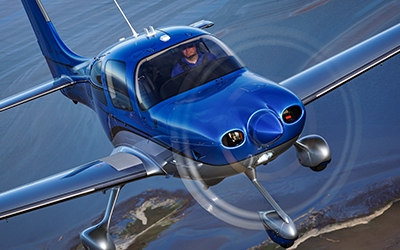Image Credit:
Cirrus Aircraft

Aspiring pilots often wonder about the duration of pilot training
Becoming a pilot is a comprehensive process that encompasses various stages, each designed to equip to-be aviators with the skills and knowledge required to operate an aircraft safely and efficiently. The duration of pilot training can vary significantly based on several factors, including the type of pilot license, the training program, individual aptitude, and regulatory requirements.
Let’s take a look at the different time frames
Private Pilot License (PPL)
For those taking their first steps into the aviation world, the journey often begins with obtaining a Private Pilot License (PPL). Typically, private pilot training
The training includes mastering fundamental skills such as takeoffs, landings, navigation, and emergency procedures. Ground school covers theoretical aspects like aviation regulations, aerodynamics, meteorology, and navigation. This basic course on how to become a pilot makes you eligible for recreational flying.
Commercial Pilot License (CPL)
Once a pilot has earned their wings with a PPL, the next step is often pursuing a Commercial Pilot License (CPL). Obtaining this certification allows pilots to build upon the skills learned during private pilot training and introduces more complex maneuvers and a deeper understanding of aviation principles.
The duration of CPL training can range from 190 to 250 flight hours and six months, depending on the country’s regulatory requirements. In addition to flight hours, commercial pilots must complete ground school studies that cover advanced topics such as advanced navigation, aircraft systems, and high-altitude operations.
Airline Transport Pilot License (ATPL)
For those with goals to command commercial airliners, obtaining an Airline Transport Pilot License (ATPL) is the pinnacle of their journey. The ATPL is the highest pilot certification level, allowing individuals to pilot large, multi-crew aircraft.
The duration of ATPL training varies widely but often requires a minimum of 1,500 flight hours and nine months of training, as per the Federal Aviation Administration (FAA) regulations in the United States. This includes the hours accumulated during previous training and additional flight hours acquired during the ATPL program. The training focuses on advanced flight operations, crew resource management, and the intricate details of operating complex aircraft.
Each pilot progresses through training at their own pace. Factors such as natural aptitude for flying, dedication to studies, and proficiency in practical skills can significantly impact the time taken to complete each training phase.
Don’t miss your chance to join our upcoming pilot training program. Secure your spot